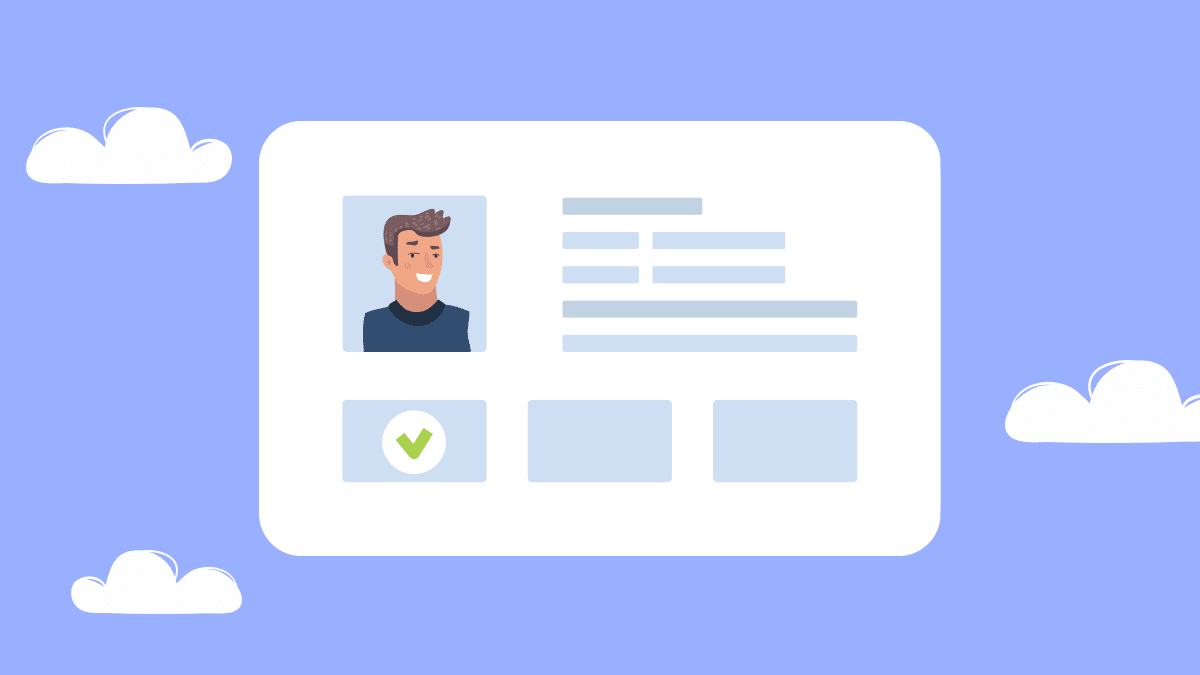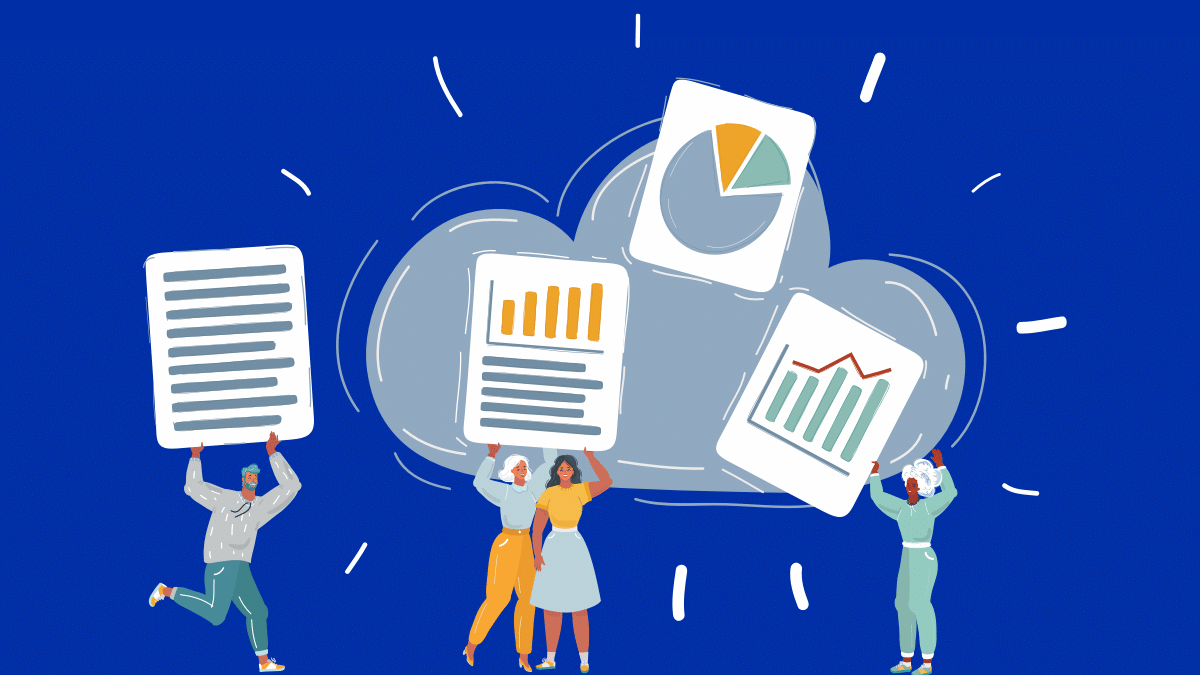The more you know about your customers, the better.
This is especially true when improving customer experience is the top priority of companies today.
The good news? We have more tools at our fingertips to determine our customers’ desires than ever.
Think about it. We can pick their brains via email, social media, and surveys. Business intelligence and analytics tools can teach us—without them having to tell us—everything from their favorite products to their biggest pain points.
Figuring out how to better serve our customers (and hitting those all important marketing objectives) doesn’t have to be a guessing game.
But does your company have all of that information in one place?
If not, it’s time to think about creating a user persona. By creating personas for your customers, you effectively have a constant reference point for giving your audience exactly what they want.
In this post, we’ll look at:
- What a user persona is
- Why businesses need user personas
- How to create a user persona from scratch
- A simple persona template (and how to use it)
- What about using a persona maker?
- How to make your user personas work
Don’t forget to download the free user persona template we’ve created to use as you’re going through these steps!
What is a user persona, anyway?
Good question. To kick things off, let’s quickly define what a user persona is.
A user persona (also known as a customer persona) is a profile of your business’s ideal customer. Detailing your customers’ backgrounds, desires, and struggles, personas are avatars of the people you do business with every day.
Think of a user persona as a sort of snapshot of one of your actual customers. Although your user persona isn’t an actual customer themselves, they represent the demographics and desires of the people your company works with.
Why businesses need user personas
At a glance, a persona might sound like something that’s tech-heavy or reserved for big businesses.
The reality, though? Small businesses should totally create user personas, too!
For starters, there’s a lot less work involved than you might think. Chances are you already have the information needed to put together a comprehensive customer persona.
But let’s take a moment to run down the big-picture benefits of creating a user persona.
1. It helps your employees understand what a customer actually looks like
No matter what you’re selling, there are usually common threads between your customers (especially the happy customers).
Their age group. Their income level. Their challenges and desires.
By identifying these common threads, it makes life easier on every single member of your team.
For example, a salesperson can use these common characteristics to more quickly identify conversation starters or overcome objections during a call (think: emphasizing a low-priced product to customers with smaller budgets).
With your user personas handy, your employees know exactly what your customers look like in the wild and how to approach them. It also makes for easier prospecting as you can say, “Okay, this person is definitely” a potential customer because they check off all the right boxes of your persona (think: demographics, professional background, and challenges).
2. It empowers your team to provide better customer service
Note that nearly 70% of consumers are willing to pay a premium for better customer service. This really speaks to the financial incentive for companies to know their audience inside and out, and a user persona helps paint a clearer picture of your customers.
And when you understand what makes your customers tick, it makes it easier to serve them.
For example, let’s say that your target audience is older and prefers to communicate over the phone. Based on this, you can spend less time trying to chase them down via email or social media.
With a persona, your customer service team is more effective as everyone is on the same page when it comes to how to reach your target audience.
3. It helps you understand your customers on a human level
To create a good user persona, you have to be able to understand your customers on a personal level.
This means doing more than just selling your product or service—it means learning to empathize with them. By adhering to a customer-centric strategy that focuses on solving problems, you can form meaningful relationships with your buyers.
As you’re creating your user persona, you should be asking questions. Lots of them. What’s holding them back in their professional lives? What motivates them? What’s the number one problem they’re looking to have solved?
Your customers are more than willing to talk to you, and a persona is the perfect place to highlight those important questions and answers.
4. It improves onboarding for employees who’ve never met a customer before
This is a big one!
Onboarding new hires is one of the most important pieces of small business management. Before your employees have a chance to interact with customers face-to-face, user personas can do the trick of helping them understand what your customers like, what they’re looking for, what they dislike, and more.
Personas allow you to reinforce your company values, tone, and messaging before your employees ever have to hop on a call or meet a customer in person. Anything you can do to help new hires learn about your audience is a plus.
How to create a user persona from scratch: the key elements
Okay, now onto the good stuff.
There’s no “one-size-fits-all” approach to creating user personas. That said, there are some key details and information that you should include if you want your personas to accurately reflect your customers.
User demographics
Let’s start with the basics. These demographic details highlight your users’ backgrounds.
- Age: How old is your typical customer?
- Location: Where do they live (think: a specific city and/or state)?
- Income: What is their annual salary? (What’s the revenue of their company?)
- Role: What do they do for a living? What role do they have at their current company (ex: marketing manager)?
- Education level: High school, college-educated, advanced degree, and so on.
- Years of experience: How long have they been in their current role?
Bio
Your persona’s bio serves as a place to summarize who your customer is and what they’re all about. For example, how would you describe their personality? What do they like to do at work and during their free time?
Highlighting the personal and professional background of your persona makes them seem more human and tangible. You don’t need to write a novel here: just a few sentences is enough.
Job responsibilities
This section of your persona highlights what your typical customer does at work, providing a sort of snapshot of their daily lives.
- Duties: What do your customers do on a day-to-day basis? Are they running meetings? Managing employees?
- Who do they work with? Which departments or teams do they collaborate with?
- Who do they report to? Are they a decision-maker? Do they report to managers or higher-ups?
Challenges and pain points
These details can help you better understand what your customers are struggling with—and more importantly, how you can help.
- What keeps them from doing their job? Micromanaging? Useless meetings?
- What frustrates them at work? Low pay, lack of productivity (here are a few productivity tips), not feeling heard or seen by managers, etc.
- What areas do they need support in? Do they need more time? Better tools?
Professional and personal goals
Your persona motivations represent broader details that help highlight your customers’ personalities and what they want out of work and life in general.
- What are their short-term desires? Get more done, be less stressed at work, build better relationships in the office, etc.
- What are their long-term goals? Get promoted, find a new job, start their own business, etc.
- What are their personal desires? Change the world, activism, etc.
Professional and personal preferences
These details signal the current brands and businesses that your customers like.
- Apps: What sorts of apps and tools are they using on a regular basis? At work? At home?
- Communication: What social media platforms do they use? Do they prefer to talk via email? Phone calls?
- Brands: What are their favorite brands? Who are they buying from?
Photos
Coupling photos to your personas allows you to bring them to life and makes your customer avatar seem more real.
Here are a few places where you can find royalty-free persona profile pictures:

Some companies also attach moodboards to their user personas. A moodboard is basically a collection of images that highlight the backgrounds, interests, or environment of your customer.
Either way, you can actually create moodboards with tools like Canva with their pre-built templates.
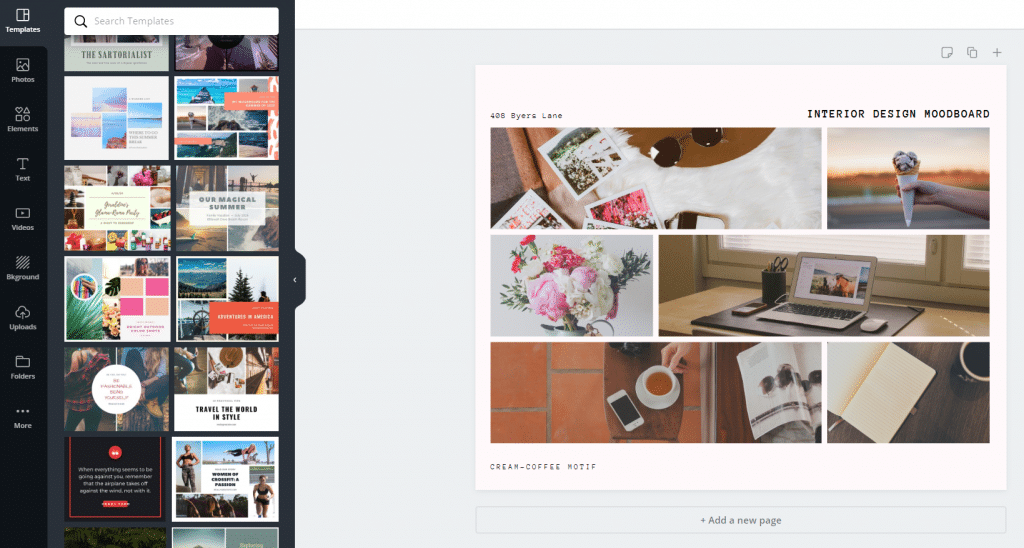
As a side note, the level of detail you go into to create a user persona is totally up to you. (Although it shouldn’t be an exercise that takes weeks upon weeks.) To avoid analysis paralysis with your personas, stick to the principle of “keep it simple.”
To make this even simpler, we put together a basic persona template that you can totally steal.
A simple persona template (and how to use it)
Here’s our customizable persona template summarizing the details we wrote out earlier.
You can add or remove bullet points based on the information you and your company have available. As an added bonus, we also made this free persona template downloadable in Word:
|
Meet [Persona Name]! [Photo] |
|
| Bio
[Placeholder] |
Background Info
|
Job Responsibilities
|
Personal and Professional Goals
|
Challenges and Pain Points
|
Personal and Professional Preferences
|
|
Moodboard (Optional) [Placeholder] |
|
And below is an example of how to write user personas using our template:
|
Meet Hannah!
|
|
| Bio
Hannah is the social media manager of a tourism and travel company in Tampa Bay. She generally enjoys her work but is struggling with managing her schedule. She’s interested in helping her company target younger clients and better define their brand voice. Long-term, Hannah wants to start her own remote marketing agency and travel the world. In her free time, Hannah is an avid travel photographer with over 10,000 followers on Instagram. She’s a creative, natural leader. |
Background Info
|
Job Responsibilities
|
Personal and Professional Goals
|
Challenges and Pain Points
|
Personal and Professional Preferences
|
What about using a persona maker?
Having a template is probably the fastest way to create a user persona, but if you want to get fancy, there are quite a few user persona creator tools out there, too. Below are some free (or free trial) persona maker tools you can experiment with and draw inspiration from.
Xtensio
Xtensio’s persona maker is comprehensive, allowing for plenty of places to input personal details, traits, and a brand moodboard. This is an example of a persona in the interior design industry using their platform:
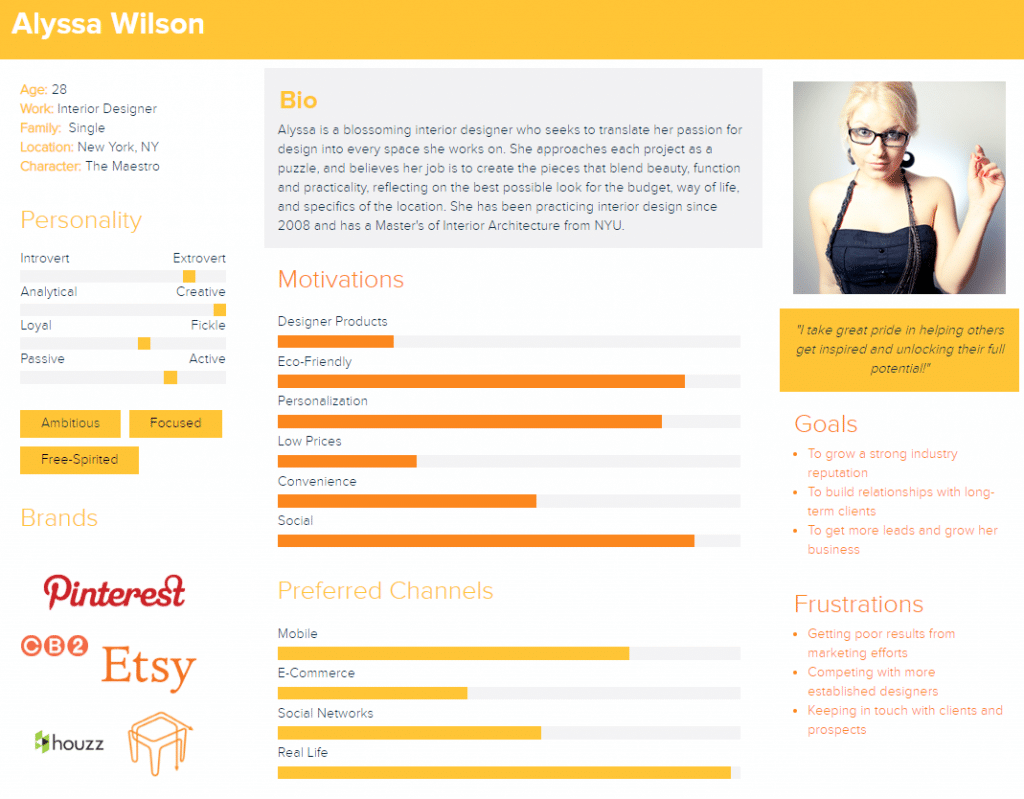
Smaply
Smaply’s persona maker is a bit more general, with less rigid guidelines for inputting customer details. If you need to create a bunch of different user personas and are pressed for time, this is a useful tool. Note the details such as a personal quote and moodboard to help bring the persona to life:
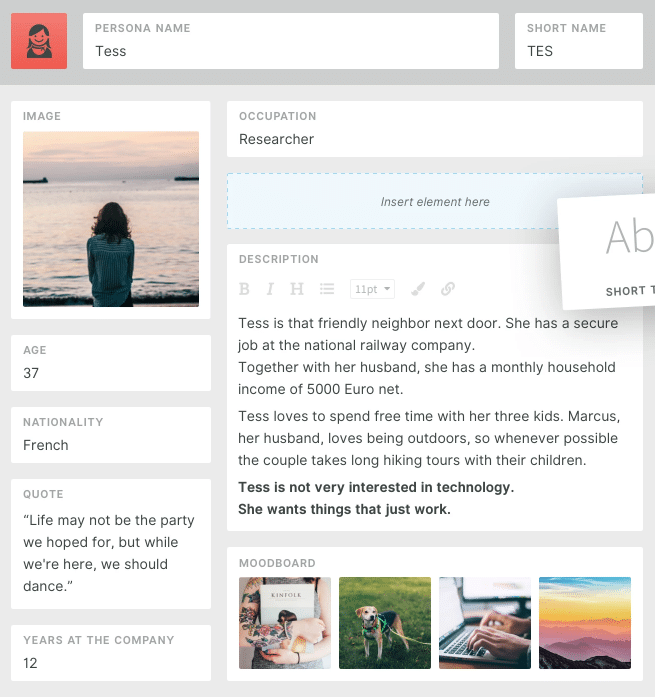
Hubspot
Hubspot’s user persona generator actually takes you through a step-by-step questionnaire to fill out your customer details. The end result is a stylish snapshot of your customers that you can share with your team.
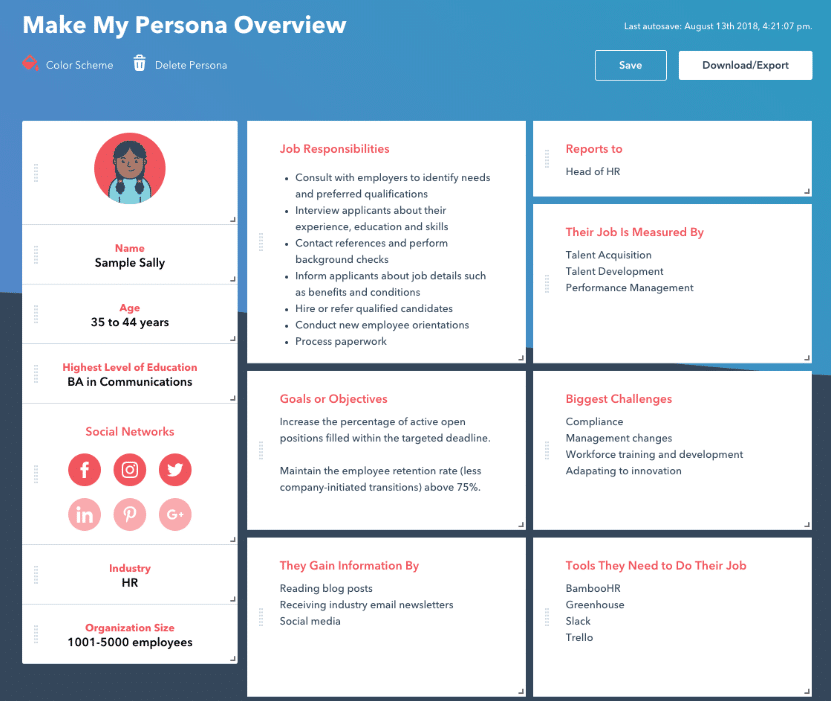
Even if you don’t use third-party tools, these user persona examples are a good starting point to give you an idea of what real-world personas look like and the level of detail you can achieve on your own.
How to make your user personas work for you
Okay, so let’s say you want to put together a persona.
Or maybe you’ve gone through the process and you’re wondering “Now what?”
There’s no denying that creating a persona requires time and resources on your part, so getting the most out of your end product makes sense. Below are four must-dos to make sure that your personas (and hard work) don’t go to waste.
1. Base your personas off of actual customer data
Simply put, your personas should be based on hard numbers rather than gut feelings.
There’s no reason to guess data points such as your average customer age or preferred method of communication. You more than likely have all of this information through platforms such as:
- Google Analytics: What content and blog posts are your customers finding you from? What keywords are they using to land on your site? Do they reveal pain points?
- A CRM: What questions are your customers asking throughout their lifecycle? What are their typical wants and needs?
- A communication platform (like RingCentral Office®): What are the most important conversations you’re having with customers? Where and when are those conversations taking place?
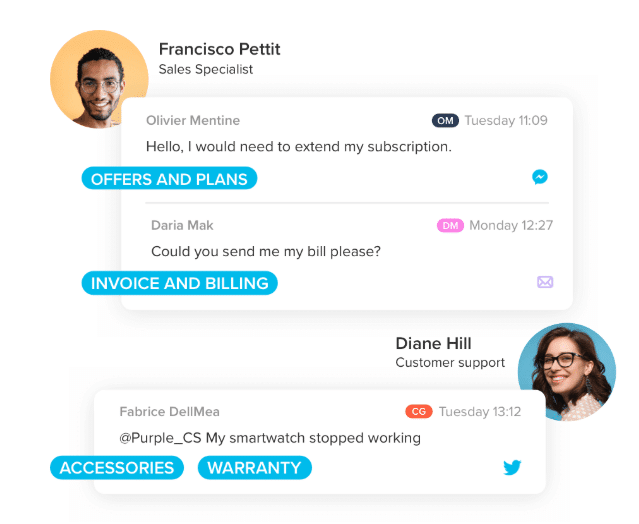
For example, RingCentral Contact Center™ shows you all the conversations you’re having with customers and prospects across different channels.
Remember, empirical data that comes from actual conversations with customers is super valuable. As noted earlier, businesses should make a point to talk to customers and ask questions.
Whether through calls, emails, or surveys, you can discuss desires and challenges to your customers and use the responses as part of your research. With these types of tools and customer experience analytics available, you can record crucial data to put together your personas.
2. Don’t let persona-making be a solo act
Putting together a user persona shouldn’t be the job of just one person on your team. Not just because it’s unfair, but also because it’s useful to have multiple perspectives and experiences.
Think of the process of a system of checks and balances (which is also key to effective teamwork, by the way). By having multiple people from multiple departments provide input, you have a more holistic understanding of what your customers look like. Although your customers may not all look the same, chances are you’ll find shared characteristics along the way.
It’s often helpful to collaborate with your team as you’re building personas. (Having a collaboration hub makes things easier.) Marketing might have one view of prospects, but salespeople and customer support reps might have a different understanding of your customers.
If you’re using a team messaging app like RingCentral, you could put together a dedicated persona-making team made up of employees across multiple departments to work together seamlessly.
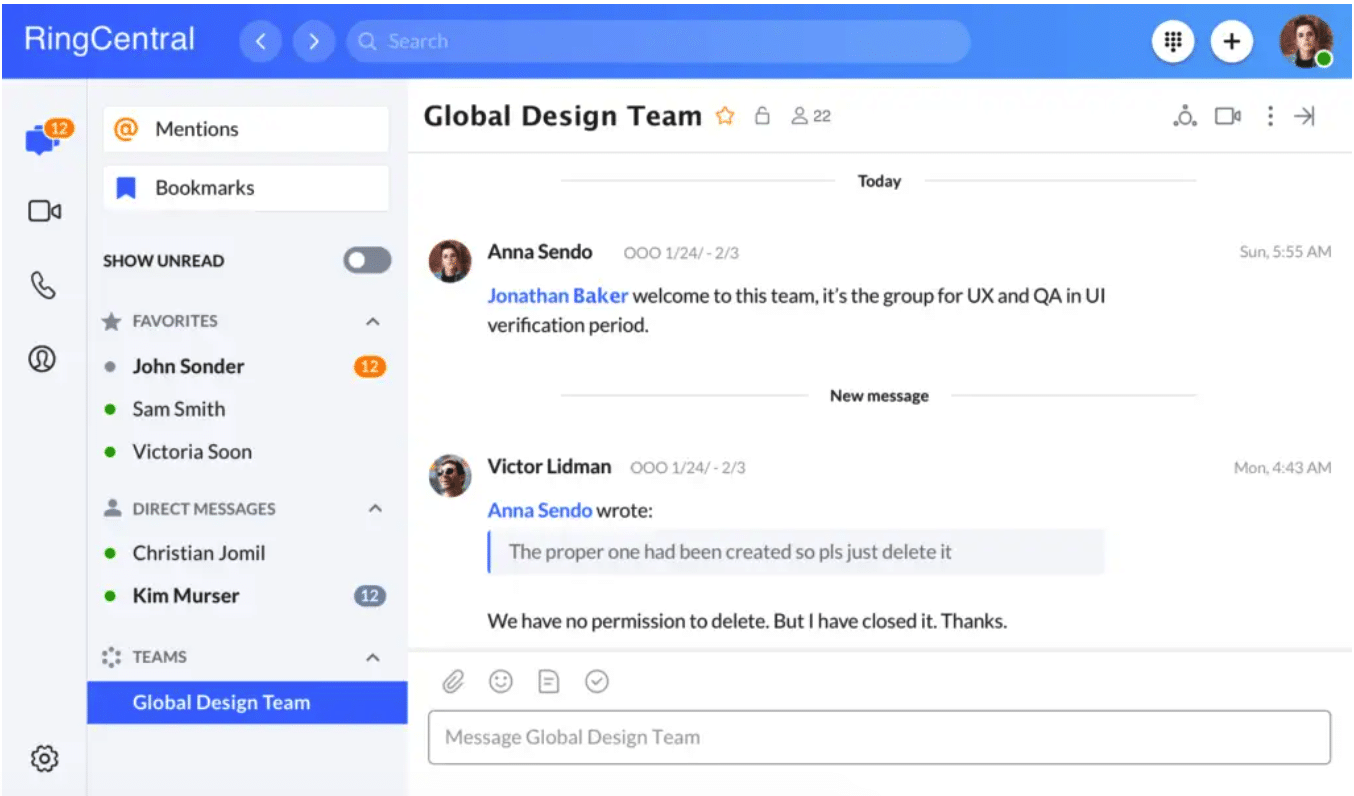
Whatever you do, make sure that the folks who are creating personas actually spend time talking to customers (think: sales, customer service/success, community managers) as opposed to someone who doesn’t actually interact much with them.
3. Share your personas with your team(s)
Another possible no-brainer that’s worth mentioning. Once your personas are finished, make them easily accessible to your team. Maybe that means printing them out onto posters and putting them up on the walls. Perhaps you can keep them in a shared Google Doc or Drive folder.
Either way, they should be easy to reference for everyone in your company.
4. Create a few more personas
Can’t fit all of your customers’ traits into a single persona? You don’t have to!
Creating multiple personas makes sense, especially if you sell multiple products or services to different audiences.
For example, you might have a product that serves both younger and older customers or students and freelancers. In these cases, a single persona wouldn’t cut it.
Although there’s no “right” answer in terms of how many personas you should have, we’d err on the side of “less is more” for the sake of simplicity. But whether you’re creating multiple personas or updating them from time to time, user persona templates can help you save time by not having to start from scratch every time.
And with that, we wrap up our guide!
Ready to put together your first user persona?
Making a user persona is a good exercise, especially for small businesses, if you’re looking to give your customers the best service possible.
Although going through the process might seem like a lot of legwork, it’s totally worth it for the sake of stepping up your customer experience.
With the help of our downloadable user persona template, you can put together custom user personas in no time flat!
Originally published Feb 01, 2020, updated Mar 19, 2021
